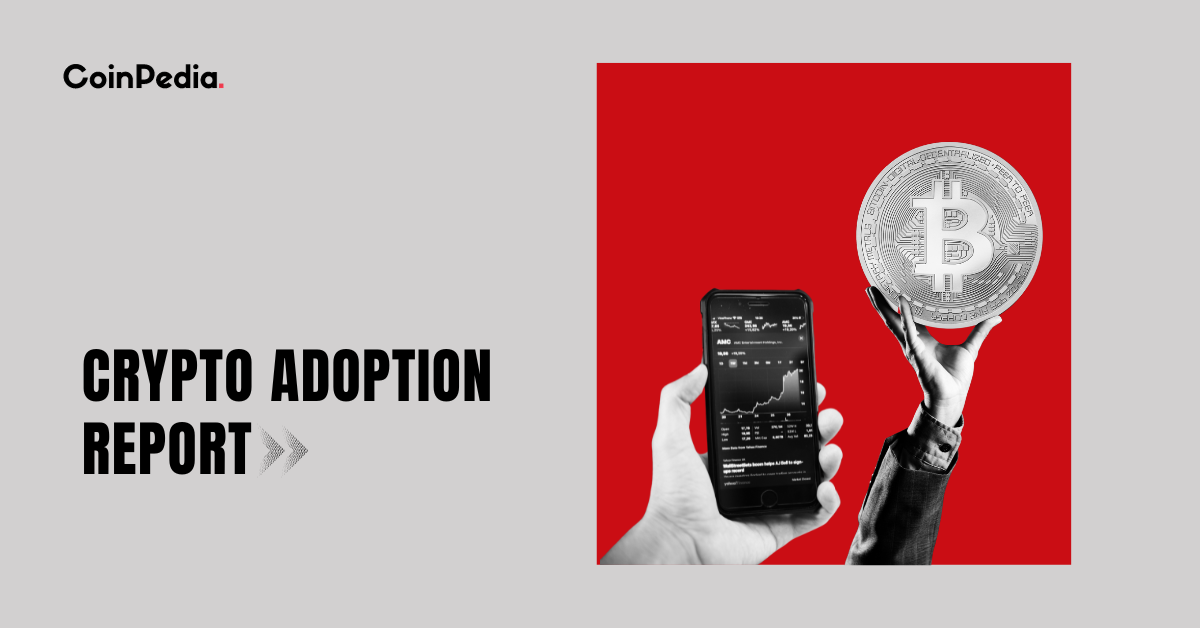
Cryptocurrency adoption has surged in 2025, driven by both institutional and grassroots participation across diverse economies. While high-income countries focus on regulatory frameworks and investment products, lower- and middle-income nations lead in real-world crypto use for remittances, inflation hedging, and payments.
This report analyzes the countries with the highest adoption indexes, demographic insights, the most popular cryptocurrencies and stablecoins, legal tender status, and market predictions for the remainder of 2025.
Global Crypto Adoption Report 2025: Top 20 Countries
Data collected from TRM Labs Crypto Adoption Report. India remained strong at its rank #1 position with the US following it.
- India
- United States
- Pakistan
- Philippines
- Brazil
- Indonesia
- Vietnam
- Republic of Korea
- Japan
- Ukraine
- Bolivarian Republic of Venezuela
- Nigeria
- Russian Federation
- Bangladesh
- Thailand
- Turkey
- United kingdom
- Argentina
- Mexico
- Egypt
- According to the report, South Asia is the fastest-growing region for crypto adoption between January to July 2025. It recorded an 80% increase from the same period in 2024.
- Between January and July 2025, crypto transaction volume in the US surged by approximately 50% compared with the same period in 2024, surpassing USD 1 trillion.
- Stablecoins represented 30% of all crypto transaction volume between January and July 2025.
- Over 90% of fiat-backed stablecoins are pegged to the US dollar, with Tether (USDT) and Circle (USDC) together comprising 93% of the total stablecoin market capitalization.
Age and Gender Index of Crypto Holders
Age Distribution:
- 18–34 years: 51% of crypto holders globally
- 35–54 years: 37%
- 55+ years: 8%
Young adults (especially 25–34) are the most active demographic in both emerging and developed markets.
Gender Distribution:
- Male: ~61%
- Female: ~39%
The gender gap is narrowing, with female participation rising fastest in Asia and Africa. Women are more likely to invest in stablecoins and DeFi yield platforms rather than speculative tokens.
| Age Group | % of Crypto Holders | Gender Split (M/F) |
| 18–24 | 20% | 70/30 |
| 25–34 | 31% | 68/32 |
| 35–44 | 23% | 67/33 |
| 45–54 | 18% | 66/34 |
| 55+ | 8% | 65/35 |
Worldwide Adoption of Crypto 2025
The data below is gathered from the CoinLaw survey 2025.
- 35% of the total El Salvador population uses crypto wallets since BTC became legal tender.
- Nigeria is leading global peer-to-peer crypto trading with 45% of Africa’s total transactions.
- Argentina and Turkey recorded a 60% increase in crypto adoption amid the countries’ high inflation.
- The US and Europe hold 65% of institutional crypto investment.
- Africa is witnessing a 60% surge in blockchain adoption as the demand for affordable remittance infrastructure has grown.
- UAE and Singapore are leading in blockchain real estate innovation as more than 50% of developers participate.
- 85% of U.S. banks are either planning or integrating blockchain solutions into their traditional payment system.
Most Adopted Cryptocurrencies (2025)
Bitcoin remains the most sought-after and held cryptocurrency worldwide, followed by Ethereum and stablecoins. Meme coins and DeFi tokens are popular in specific regions.
| Rank | Crypto | Global Ownership (%) | Top Countries Using It |
| 1 | Bitcoin | 62% | US, India, Nigeria, Vietnam, Brazil, UK |
| 2 | Ethereum | 7% | US, Canada, Germany, India, Singapore |
| 3 | Tether (USDT) | 5% | Turkey, Nigeria, Brazil, Indonesia, Vietnam |
| 4 | XRP | 4% | Japan, South Korea, US |
| 5 | Binance Coin (BNB) | 3% | India, Nigeria, Brazil, Vietnam |
| 6 | Solana | 2.5% | US, Singapore, Vietnam |
| 7 | USD Coin (USDC) | 2% | US |
| 8 | Dogecoin | 0.8% | US, India, Philippines |
| 9 | Cardano | 0.8% | Indonesia, US, UK |
| 10 | Tron | 0.7% | US, UK, Singapore |
Most Adopted Stablecoins (2025)
Stablecoins have become essential in emerging markets for remittances, savings, and payments.
| Rank | Stablecoin | Global Market Share | Top Adoption Countries |
| 1 | Tether (USDT) | ~65% | Nigeria, Turkey, Brazil, Vietnam, Indonesia |
| 2 | USD Coin (USDC) | ~20% | US, UK, Singapore, Brazil |
| 3 | Dai (DAI) | ~5% | US, Europe, Latin America |
| 4 | First Digital USD (FDUSD) | ~3% | Hong Kong, Singapore, UAE |
| 5 | Ethena USDe | ~2% | US, Europe, DeFi platforms |
Bitcoin as National Reserve
| Country | Status (2025) | Notes |
| El Salvador | Active reserve | Has over 6,000 BTC as part of the national reserve |
| Bhutan | Active reserve | Accumulation via sovereign mining |
| United States | Announced/active (federal, state) | Strategic reserve established by executive order |
| Czech Republic | Planning/studying | Up to 5% of reserves by 2027 |
| Russia | Planning/legislative proposals | Strategic reserve for sanctions resilience |
| Singapore | Expected/advanced planning | Active digital asset projects |
| UAE | Expected/advanced planning | Major crypto hub, reserve plans in progress |
| Brazil | Drafting legislation | Bills to include BTC in reserves |
| Switzerland | Citizen-led initiative | Proposal for central bank reserves |
| South Africa | Political advocacy | Parties pushing for reserve adoption |
| Indonesia | Bitcoin reserve | Drafted proposal |
| Poland | Political advocacy | Presidential campaign promises |
| Germany | Political/legislative discussion | No formal reserve yet |
| Japan | Political/central bank discussion | No formal reserve yet |
| Hong Kong | Political/legislative discussion | No formal reserve yet |
| Venezuela | Political/legislative discussion | No formal reserve yet |
Crypto Market Prediction for H2 2025
- Market Outlook: Continued growth is expected, driven by institutional investment, new ETF products, and regulatory clarity in the US and EU.
- User Base: Global crypto users projected to surpass 950 million by year-end.
- Bitcoin Price: Analysts forecast BTC could reach $120,000–$140,000 by December 2025, barring major regulatory shocks.
- Stablecoin Expansion: Further growth in emerging markets, especially for remittances and cross-border payments.
- AI & DeFi: AI-driven crypto projects and DeFi platforms will continue to reshape the digital asset landscape.
- Analysts expect Ethereum to break the $4,000 level and potentially reach new all-time highs in 2025.
Major Adoption News – H1 2025 Timeline
| Month | Event/Headline |
| January | US launches Bitcoin Strategic Reserve; ETF inflows surge |
| February | Vietnam legalizes crypto for the first time |
| March | Pakistan Crypto Council launched; CZ joins as advisor |
| April | Thailand recognizes Tether (USDT) as an approved digital asset |
| May | Pakistan announces its first government-backed Bitcoin reserve |
| June | South Korea passes stablecoin legalization bill |
| July | The Genius Act passes in the United States |
| Auguts | Ripple vs SEC officially ends |
Conclusion
Cryptocurrency adoption in 2025 is accelerating at both the institutional and grassroots levels, with lower- and middle-income countries leading in real-world usage and high-income nations advancing regulatory clarity.
Bitcoin and stablecoins are the most widely adopted assets, serving as both investment vehicles and practical tools for payments and remittances. With new legal frameworks, technological innovation, and growing user confidence, the global crypto ecosystem is poised for further expansion in the second half of 2025.
Never Miss a Beat in the Crypto World!
Stay ahead with breaking news, expert analysis, and real-time updates on the latest trends in Bitcoin, altcoins, DeFi, NFTs, and more.
FAQs
India, Nigeria, and Vietnam lead 2025 crypto adoption due to grassroots usage, remittances, and DeFi activity.
Bitcoin, Ethereum, and Tether (USDT) top global usage, especially in the US, India, Nigeria, and Vietnam.
Trust with CoinPedia:
CoinPedia has been delivering accurate and timely cryptocurrency and blockchain updates since 2017. All content is created by our expert panel of analysts and journalists, following strict Editorial Guidelines based on E-E-A-T (Experience, Expertise, Authoritativeness, Trustworthiness). Every article is fact-checked against reputable sources to ensure accuracy, transparency, and reliability. Our review policy guarantees unbiased evaluations when recommending exchanges, platforms, or tools. We strive to provide timely updates about everything crypto & blockchain, right from startups to industry majors.
Investment Disclaimer:
All opinions and insights shared represent the author's own views on current market conditions. Please do your own research before making investment decisions. Neither the writer nor the publication assumes responsibility for your financial choices.
Sponsored and Advertisements:
Sponsored content and affiliate links may appear on our site. Advertisements are marked clearly, and our editorial content remains entirely independent from our ad partners.







